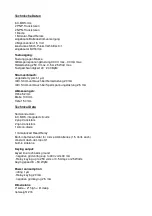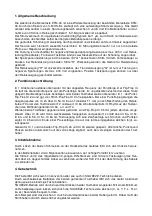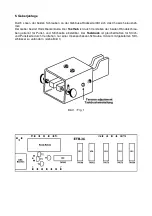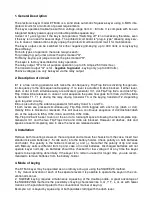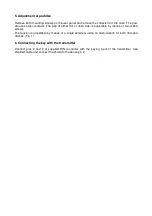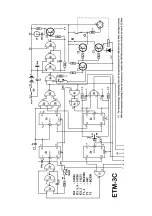
1. General Description
The electronic keyer model ETM-3C is a solid state automatic Squeeze-keyer using C-MOS inte-
grated circuits for a minimum of power requirements.
The keyer operates trouble-free within a voltage-range from 3···8 Volts. It is complete with its own
integrated battery power supply and double paddle squeeze key.
Current of 1 µA is typical, if the key is not operated. "Switching off" is not necessary therefore, even
if the key is not used for several days. The printed circuit board is "plug-in type" allowing easy serv-
ice. In case of malefunction simply unplug the printed circuit board and mail it for maintenance.
The keyer output can be switched for either negative grid-keying up to 300 Volts or relay-keying
(Reed-Relay).
For both types of operation there are two pins each:
For grid-keying: put jumer across the pins marked "G".
For Relay-keying: put jumper across the pins marked "R".
The keyer is factory assembled for relay operation.
The relay output "R" is for all purpose operation (up to 0.5 Amps, 250 Volts max.).
The transistor output "G" is for -
negative to ground
- keying only (up to 300 Volts).
Positive voltages can only be keyed via the relay output.
2. Description of circuit
IC1 is a free running generator with twice the dot-frequency. Flip-Flop IC2a is dividing this genera-
tor-frequency to the dot sequence-frequency. If no lever is actuated, IC2a is blocked. If either lever,
dash or dot or both simultaneously are activated, generator IC1, dot-Flip-Flop IC2a and dash-Flip-
Flop IC3a will be released. In case of a dot sequence the pulse flow goes from IC2a via IC5a, IC6a
to transistor T1. T1 is driving the relay-driving transistor T3 or the keying transistor T2, depending
upon required circuitry.
IC6a is also driving the sidetone-generator formed by IC6d, b, c and T4.
If both levers are pressed simultaneously, Flip-Flop IC3b toggles with each sign (dash or dot).
Hereby IC3a is blocked or released. This will cause a continuous sequence of dot/dash/dot/dash
etc. at the output via IC5a, IC5c, IC6a, and IC5b, IC5c, IC6a.
Flip-Flop IC2b will be set to zero at the end of a full-lenght space following the last complete sign.
Generator IC1 and the two Flip-Flops IC2a and IC3a are blocked. However all dashes, dots and
spaces are self-completing also in case the lever are released earlier.
3. Installation
Remove both mounting screws on the rear panel and remove the chassis from the case. Insert four
standard size AA batteries (1.5 volts each) into the battery-holder. Check polarity on both batteries
and holder. The polarity in the holder is marked (+) and (–). Note that the polarity of tip and case
with Mercury cells is different from tip and case of normal batteries. Discharged batteries will not
operate keyer normally, so batteries should be checked for low voltage if at any time the keyer
apears to be operating abnormally. If the keyer is to remain unused for longer time, you are recom-
mended to remove batteries from the battery-holder.
4. Mode of keying
The ETM-3 keyer may be operated as an ordinary el-bug or using the SQUEEZE-method.
1. By mutual activation of each of the seperate levers it is possible to operate the keyer in the con-
ventional manner.
2. SQEEZE keying requires simutaneous squeezing of the double paddle. A great advantage of
the SQUEEZING method is the possibility of keying characters like C, Q, Y F, L, ar, sk with fewer
motions of the paddle compared to the conventional manner of keying.
Example: a C is keyed by squeezing of both paddles starting with the dash lever.
Summary of Contents for ETM-3C
Page 1: ...ETM 3C SQUEEZE KEYER...
Page 7: ......


